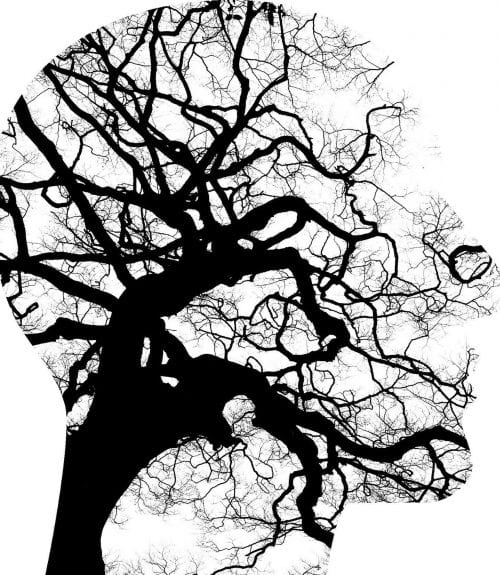Visualization Activities
 Visualization is a powerful technique that involves creating mental images and scenarios. By using your imagination to visualize positive outcomes, you can improve your mental health in several ways. Visualization can reduce stress and anxiety, boost mood and self-esteem, enhance motivation and goal achievement, improve sleep, and reduce pain.
Visualization is a powerful technique that involves creating mental images and scenarios. By using your imagination to visualize positive outcomes, you can improve your mental health in several ways. Visualization can reduce stress and anxiety, boost mood and self-esteem, enhance motivation and goal achievement, improve sleep, and reduce pain.
Benefits of Visualization
One of the most significant benefits of visualization is its ability to reduce stress and anxiety. By creating mental images of calm and peaceful scenes, you can activate your body’s relaxation response and counteract the physiological effects of stress. In addition to reducing stress, visualization can also boost your mood and self-esteem. When you visualize positive outcomes, you’re essentially programming your mind to believe in your abilities and expect success – this can lead to a more optimistic outlook and a greater sense of self-worth.
Visualization can also enhance motivation and goal achievement. By imagining yourself achieving your goals, you can create a strong internal motivation to keep going, even when faced with challenges. This can increase your chances of success and help you overcome obstacles. Visualization can also improve sleep – by visualizing relaxing scenes before bed, you can help your mind and body prepare for rest – this can make it easier to fall asleep and improve the quality of your sleep.
Visualization has also been shown to be effective in reducing pain, particularly chronic pain. Studies have found that when people visualize themselves feeling pain-free, they may experience a reduction in their perceived pain levels.
Visualization Techniques
Visualization can be practiced in various ways, each with its own unique benefits. One popular technique is guided imagery. In guided imagery, you listen to a recording or work with a therapist who guides you through creating mental images that promote relaxation and well-being. These images can be as simple as a peaceful beach scene or as complex as a specific goal you want to achieve.
Another effective technique is mindfulness meditation. This involves focusing on the present moment and using your imagination to create positive mental images. By bringing your attention to the present, you can reduce stress and anxiety, and improve your overall mood.
You can also create your own visualization scripts to focus on specific goals or challenges. This involves writing a detailed description of the desired outcome and visualizing yourself achieving it. By creating a script, you can tailor the visualization to your specific needs and make it more effective.
You can also imagine yourself achieving your goals or overcoming challenges in a detailed and vivid way. This technique is similar to creating a mental movie. By visualizing yourself succeeding, you can boost your motivation, increase your confidence, and make it more likely that you’ll achieve your goals.
Tips for Effective Visualization
To get the most out of your visualization practice, it’s important to create a conducive environment. Find a quiet, comfortable space where you won’t be disturbed. This will allow you to fully immerse yourself in your visualization. Once you’ve found a suitable location, close your eyes and take a few deep breaths. This will help you relax your body and mind, making it easier to focus on your visualization. As you breathe, try to release any tension or stress. When visualizing, use all of your senses. Imagine the sights, sounds, smells, tastes, and feelings associated with your visualization. The more vivid and detailed your mental images, the more effective your visualization will be.
Consistency is key when it comes to visualization. The more you practice, the better you’ll become at creating clear and powerful mental images. Make visualization a regular part of your daily routine. Try not to get discouraged if you find it difficult to visualize at first. It takes practice to develop the skill of creating vivid mental images.
Can’t Visualize and Form Mental Images?
You can still benefit from this approach by using emotional and sensory visualization. Imagine the positive emotions you’ll feel when you achieve your goal – focus on the feelings of joy, satisfaction, or relief. This can be a powerful way to motivate yourself and stay focused on your objectives. For example, if your goal is to start your own business, you might imagine the feelings of pride, accomplishment, and financial freedom that come with being your own boss.
Imagine the sensations you’ll experience when you achieve your goal. This can help you create a more vivid and immersive mental image. For example, if your goal is to run a marathon, you might imagine the feeling of crossing the finish line, the sound of the crowd cheering, and the physical sensations of running.
The goal of visualization is to create a mental representation of your desired outcome, and this can be done in different ways for different people. Experiment with these techniques to find what works best for you.
Closing Thoughts
Visualization is a versatile and effective tool that can be used to address a wide range of mental health challenges. By harnessing the power of your imagination, you can reduce stress, boost your mood, improve your self-esteem, and achieve your goals.

Matthew A. Webster, MA, MS, ED.D, LPC
Dr. Matt Webster is a professional educator, nutritionist, and therapist located in the Houston, Texas area. He specializes in couples therapy, sexuality, and maladaptive eating patterns with a focus on the role of nutrition. More About Matt >>
Last modified:









